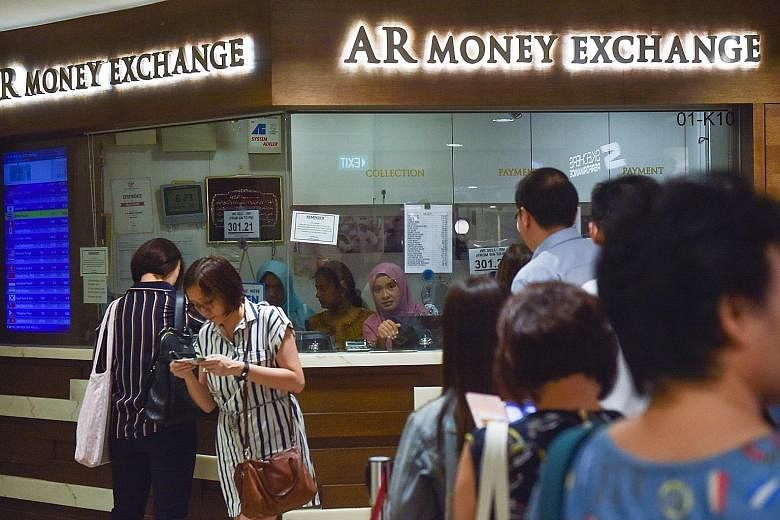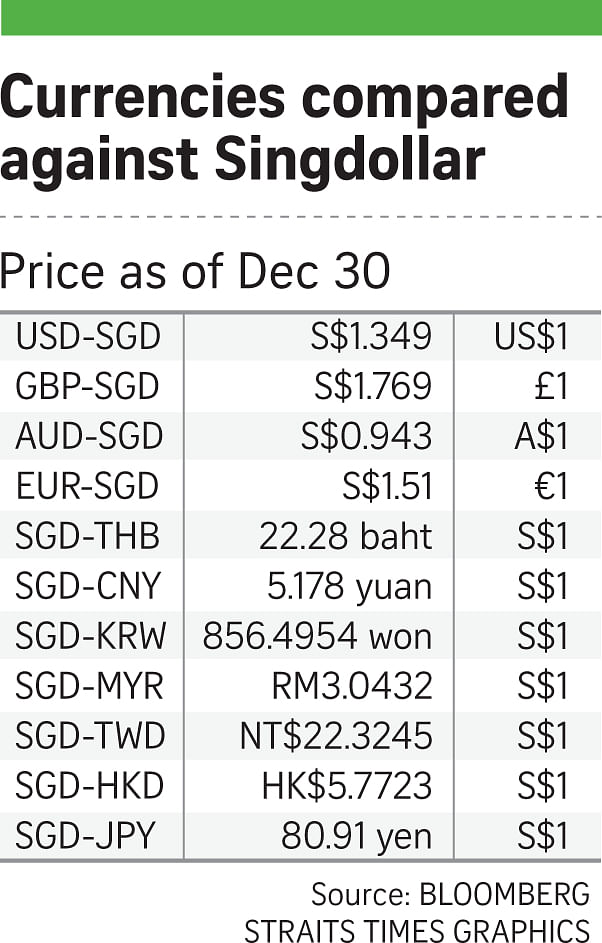Share markets and the global trading system were racked by volatility this year, but the Singapore dollar sailed serenely through the turmoil with little overall change against major currencies.
There were the usual ups and downs over the 12 months, but by and large it finished 2019 pretty much where it started on Jan 1.
Compare it against the United States dollar, for instance. The greenback is worth around 1.35 Singapore dollars now, about what it was at the start of the year. It stuck to a fairly narrow range as well, hitting a low of $1.34 on Jan 31 and a high of $1.39 in September.
There was more movement in the British pound. It started the year on $1.74, hit a high of $1.80 in March, fell to a low of $1.66 in August, before surging to $1.77 this month after the decisive general election result two weeks ago brought more certainty to the Brexit issue.
While the pound was heading north against the Singdollar, the euro was going the other way. It dropped from $1.56 on Jan 1 to about $1.51 this month.
It has been a good year for Singaporeans with children studying in Australia or those keen on a holiday there. The Australian dollar stayed low against the Singdollar: It is worth around 94 Singapore cents this month, similar to the level on Jan 1.
It was not so sweet for those venturing to one of Singapore's other favourite destinations - Thailand.
The Singdollar fell steadily against the Thai currency throughout the year, down from 23.75 baht on Jan 1 - its strongest point in the 12 months - to around 22.28 baht now.
Economist Radhika Rao and strategist Duncan Tan from DBS Bank called the baht "the regional out-performer" in a July report.
The baht grew to a point that Thai Tourism and Sports Minister Phiphat Ratchakitprakarn has blamed it for the falling number of visitors to South-east Asia's second-largest economy, according to a Bloomberg report.
The Singdollar fared better on other fronts, ending this year slightly higher against the Chinese yuan, Korean won, Malaysian ringgit and Taiwanese dollar.
It was stable against the Hong Kong dollar, which is pegged to the greenback, which helps the Hong Kong currency to remain stable even as residents there continue with protests.
The peg has allowed the Hong Kong currency to hold steady in the face of other daunting crises, including the stock market crash in 1987, the Asian financial crisis in 1998, the severe acute respiratory syndrome outbreak in 2003 and the global financial crisis in 2008, the South China Morning Post reported in October, on the peg's 36th anniversary.
The Singdollar was down against the Japanese yen. The Japanese currency is predicted to outperform its Group of 10 peers by the year end and gain nearly 3 per cent against the US dollar, according to a Bloomberg survey of currency analysts in September.
CLICK HERE TO LISTEN TO BT'S MONEY HACKS PODCAST: https://omny.fm/shows/st-bt/playlists/money-hacks



